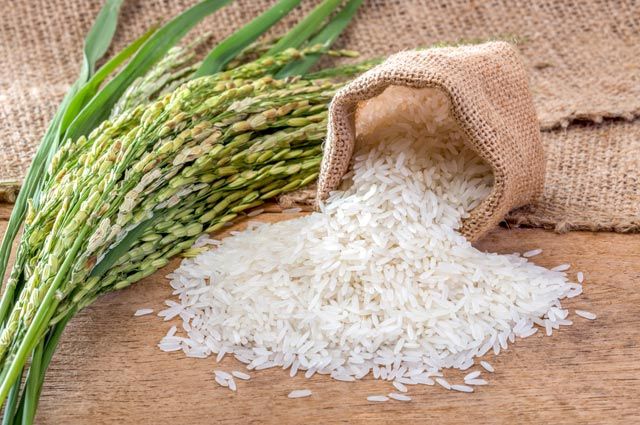Rice Is Saving Asia as Ukraine War Drives Up Food Prices

Russia’s invasion of Ukraine has driven up food prices around the world, but the situation is less grim in Asia. Thank rice.
Following successive bumper crops, rice has emerged as a rare food commodity that has generally been cheaper this year than it was last year. That’s great news for the billions of people who live across the swath of Asia where the grain is a popular staple, from India to Thailand, Vietnam and Japan. The region encompassing South, Southeast and East Asia produces and consumes more than 80% of the world’s rice, according to data from the U.S. Department of Agriculture.
By contrast, supplies of wheat, corn and vegetable oils have been disrupted by the war in Ukraine, a major exporter of these basic commodities. Populations that rely on a bread-based diet, such as in Egypt and Lebanon, have been hit hard. At the same time, higher prices of gas, animal feed and fertilizer have made products like soy and chicken more expensive, contributing to growing world hunger.
“Rice is the current anchor,” said Josef Schmidhuber, deputy director of the United Nations Food and Agriculture Organization’s trade and markets division. “It provides stability to global food security.”
At just over 4%, inflation in developing Asia in May was around half the rate in the U.S. and eurozone and about a quarter of the rate in Latin America and sub-Saharan Africa, according to preliminary data from the Asian Development Bank. The bank attributed the relatively low inflation in part to stable rice prices.
As of mid-June, global corn and wheat prices were 27% and 37% higher, respectively, than in January. Rice prices were about 17% lower, according to the World Bank.
The main reason rice has stayed affordable is its abundance. Good harvests in the world’s top producers—China, India, Bangladesh, Indonesia, Vietnam and Thailand—caused global production to hit record levels last year, at 521 million metric tons, FAO data shows. This year’s crop is expected to be nearly as large at 520 million metric tons. Ukraine isn’t a significant exporter of rice, so supply of the grain isn’t directly affected by the war.
While high fertilizer and fuel prices remain a challenge for farmers, many Asian governments provide heavy subsidies to rice growers, which helps ensure steady production.
Sharif Bukhari, who runs a restaurant in New Delhi, India, selling biryani, a rice dish, says the high cost of bread means he is increasingly eating more rice at home. Before wheat prices rose, the family would often buy naan flatbread or flour to make unleavened breads.
In the Philippines, Jennifer Jasme, a customer-service agent, says her family is dining out less in favor of simple home-cooked rice meals. Unlike prices for beef and chicken, the price of the brand of rice she buys hasn’t changed, Ms. Jasme said.
Iran and Iraq have accelerated purchases of rice from abroad, according to the FAO. African countries are expected to import 10% more rice this year to an all-time high of 19.4 million metric tons, the organization says. In Vietnam, farmers are using cheap rice to feed pigs that would otherwise gobble corn and wheat.
Still, agriculture experts say rice alone can’t solve global hunger. Rice often relies on intensive irrigation, which means some varieties remain more expensive than wheat, making the grain less accessible to many of the world’s poor.
Another challenge is the high import duties some countries impose on grains, including rice, to support domestic production. In Uganda, for instance, authorities regularly intercept rice being smuggled on trucks covered with sand, concealed alongside cement, or hidden in bags of sugar.
There is one more factor limiting the global uptake of rice: Even when prices rise, people are attached to the grains they grew up eating. “You wouldn’t make a carbonara with basmati, would you?” said Shirley Mustafa, a Rome-based rice economist with the FAO.
That’s less of an issue in Asia. India, the world’s second-largest rice producer after China, has added more rice in place of expensive wheat to its subsidized grain-distribution program. The exceptions are states in northern India where bread is the main staple. “They will continue to get wheat,” Sudhanshu Pandey, secretary of India’s Department of Food and Public Distribution, said last month.
In May, India joined many other countries in restricting wheat exports to shore up domestic supply. Rice continues to be exported freely, on the back of large surpluses.
Low rice prices could affect long-term supply. A recent survey by Japan’s agriculture ministry found more rice farmers are planning to shift to growing wheat and soybeans. On Indonesia’s Java island, farmer Nur Hadi says that with rice fetching low rates, some farmers are switching to planting peanuts and tomatoes.
“The price of fertilizer is rising, but the price of rice isn’t going up, it’s actually going down,” he said. “Farmers are screaming.”
Read also
Wheat in Southern Brazil Impacted by Dry Weather and Frosts
Oilseed Industry. Leaders and Strategies in the Times of a Great Change
Black Sea & Danube Region: Oilseed and Vegoil Markets Within Ongoing Transfor...
Serbia. The drought will cause extremely high losses for farmers this year
2023/24 Safrinha Corn in Brazil 91% Harvested
Write to us
Our manager will contact you soon



